High fiber diet plan plays a vital role in helping us to lose weight quickly and healthily. Fiber helps in cleaning the body by natural means. With the consumption of high fiber in our diet, it not only provides our body with sufficient energy, but it also makes us feel full for a long time after eating fiber content. For this reason, dieticians recommend cholesterol control and high fiber diet plan to lose weight.
Consuming colossal amount of fiber in your diet means giving nutrients to the body. Fiber-made food not only helps to keep our heart strong but also reduces high blood pressure and reduces the risk of stroke. If you are adding high fiber to your diet to maintain the weight, it is very useful to keep your stomach filled for a long period. This helps to maintain the digestive tract and digestion and sugar levels.
Summary:
If you aren’t used to high fiber food consumption, then add high fiber into the diet plan slowly and try to drink more water during the course of the day. As consuming too much high fiber can lead you to stomach cramping.
7 Day High Fiber Diet Plan
See the 7 day high fiber diet plan below:
DAY 1
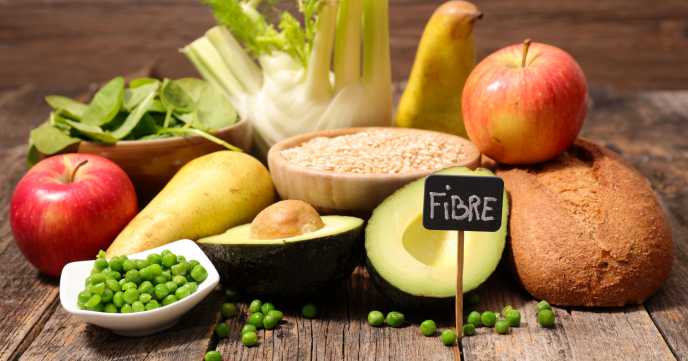
Source :- weightlossresources . co . uk
Breakfast
One bowl whole grain bran cereal (not more than total 5 grams of high fiber), seasoned with ½ sliced banana of total 1.5 grams of high fiber and ½ cup skim milk
Breakfast Snack
3.3 grams of high fiber (20 to 25 almonds) mixed with a ¼ cup of washed raisins which is of 2 grams of high fiber
Lunch
Make turkey sandwich with whole wheat bread + chopped lettuce + sliced tomato (total 5 grams of high fiber)
1 orange which is 3.1 grams of high fiber
Lunch Snack
½ cup of yogurt with a hand full of blueberries (total 2 grams of high fiber)
Dinner
4 ounce grilled fish with a plate full of green salad prepared with some romaine lettuce + shredded carrots (total 2.6 grams of high fiber) + ½ cup of heated spinach (not more than 2.1 grams of high fiber), and ½ cup of lentils (not more than 7.5 grams of high fiber)
Night Time Snack:
1 bowl popped popcorn (not more than 3.5 grams of high fiber)
DAY 2

Source :- theglowingfridge . com
Breakfast
1 small bowl freshly made peanut butter alongside oats
½ cup of blueberries (total 5 grams of high fiber)
Breakfast Snack
Finely sliced carrot and cucumber with ½ cup of homemade spinach and some 2 tbsp. of artichoke hummus
Lunch
Finely chopped green salad + 2 cups full of homemade spinach + ¼ cup of chickpeas,
1.5 ounce goat cheese + ¼ sliced cucumber + ½ chopped red pepper + 1 Tbsp. full of hemp seeds
2 Tbsp. full of salad dressing (balsamic vinegar or lemon or olive oil) and ¼ avocado
Lunch Snack
1 orange or a hand full of nuts
Dinner
5 ounce of steamed salmon fish alongside 1 Tbsp. of tamari + ½ cup of microwaved quinoa and veggie mix or sautéed asparagus
Night Time Snack:
¼ cup of raw mixed nuts
DAY 3
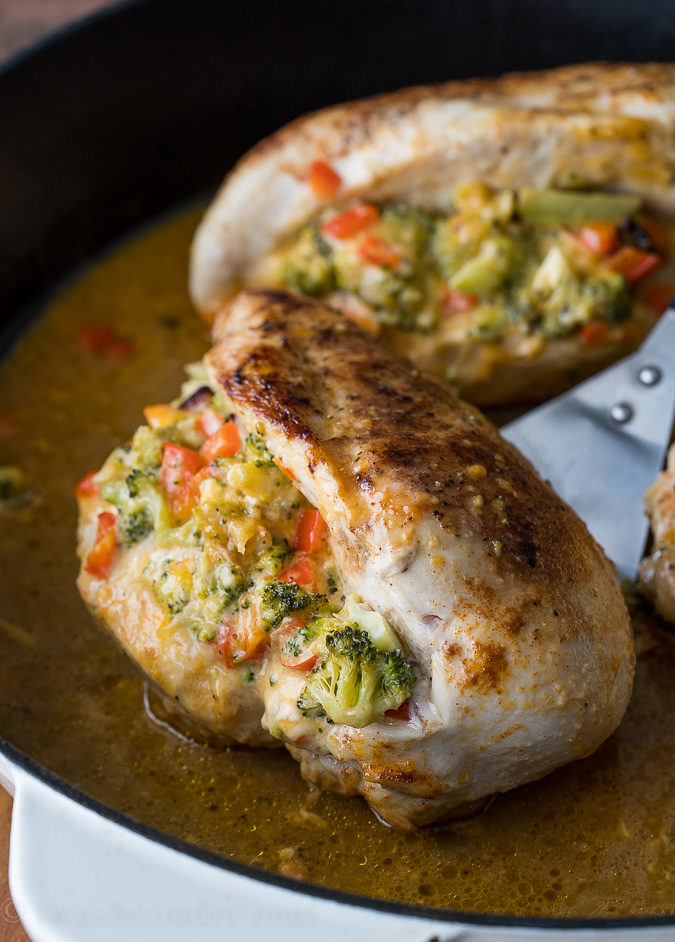
Source :- iwashyoudry . com
Breakfast
2 scrambled eggs prepared with 1 tablespoon olive oil or low fat vegetable oil, 1 cup full of chopped and lightly cooked spinach + ¼ cup of sliced tomatoes, chopped garlic and then served with ½ an avocado
Breakfast Snack
1 small bowl brown rice along with 1 Tbsp. full of natural raw almond or homemade peanut butter + ½ piece of medium banana
Lunch
Chicken breast stuffed with 1 slightly roasted medium sized red pepper, 1½ slice of mozzarella cheese, large kale leaf 1 piece) with 2 Tbsp. full of marinara sauce.
With it you can also add 1 cup of green salad with ½ Tbsp. of dressing, ¼ cup of roasted potatoes and 1 tsp. of olive oil, black pepper powder & salt for dressing.
Lunch Snack
½ cup full berries with ½ cup of fat or Greek yogurt.
Dinner
1 cup of soup made with butternut squash and 1 whole grain bread and 2 tbsp. of pumpkin seeds
Night Time Snack:
¼ cup of buttermilk or a hand full of dry fruits
Recommended Articles :-
- Know In Detail About Fruitarian Diet Pros And Cons
- Quick And Tasty Low Fat Chicken Recipes For Diet
- Weight Watchers diet overview and a proper guide
- A Proper Guide To 7-Day Anemia Diet Plan
- Diabetic Meal Plan For A Month: Control Diabetic With Diet Plan
- What Is ADHD Compulsive Eating? How Does It Work?
DAY 4
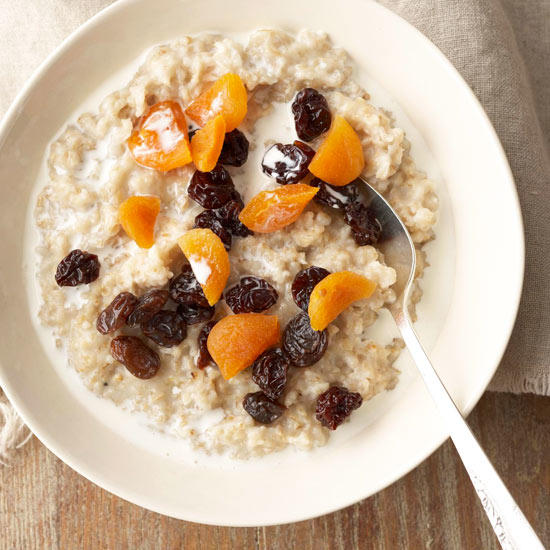
Source :- bhg . com
Breakfast
One bowl cooked oats, seasoned with ½ sliced banana, ½ bowl blueberries, 10 to 12 sliced almonds, and ½ cup skim milk
Breakfast Snack
¼ cup of washed raisins
1 banana
Lunch
Make turkey sandwich with whole wheat bread + chopped lettuce + sliced tomato (total 5 grams of high fiber)
1 orange
Lunch Snack
½ cup of yogurt with a hand full of blueberries
Dinner
6 ounce of steamed salmon fish with a plate full of green salad prepared with some romaine lettuce + shredded carrots + ½ cup of heated spinach, and ½ cup of lentils
Night Time Snack:
1 bowl popped popcorn
DAY 5
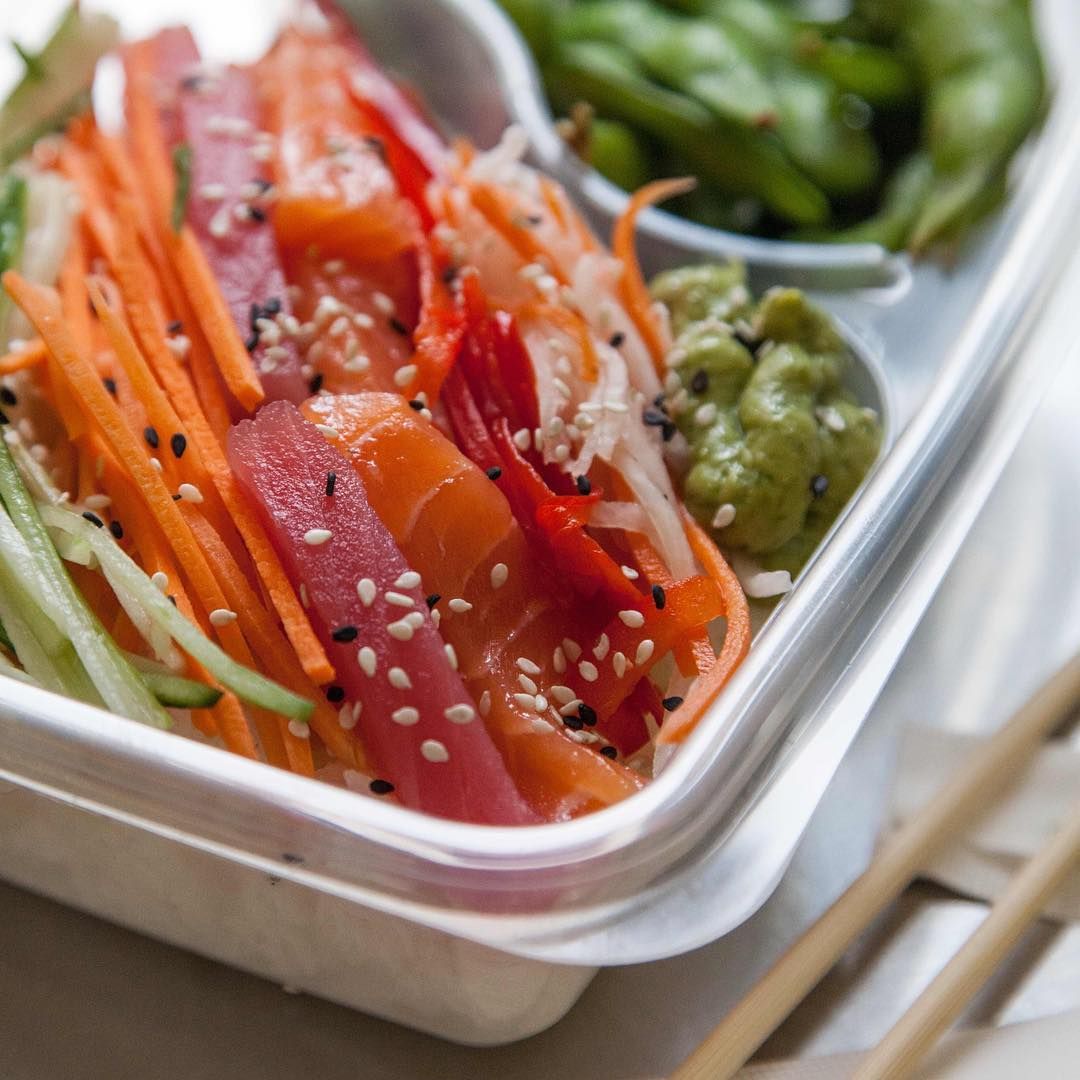
Source :- pinterest . com
Breakfast
2 slices of whole wheat bread with freshly made peanut butter
½ cup of blueberries and skim milk ½ cup
Breakfast Snack
Finely sliced carrot and cucumber with ½ cup of homemade spinach and some 2 tbsp. of artichoke hummus
Lunch
Finely chopped green salad + 2 cups full of homemade spinach + ¼ cup of chickpeas, 2 Tbsp. full of salad dressing (balsamic vinegar or lemon or olive oil) and ¼ avocado
1.5-ounce goat cheese + ¼ sliced cucumber + ½ chopped red pepper + 1 Tbsp. full of hemp seeds
Lunch Snack
1 apple or a hand full of dry fruits
Dinner
5 ounce of grilled salmon fish alongside 1 Tbsp. of tamari + ½ cup of microwaved quinoa and veggie mix or sautéed asparagus
Night Time Snack:
½ cup of dry fruits
DAY 6
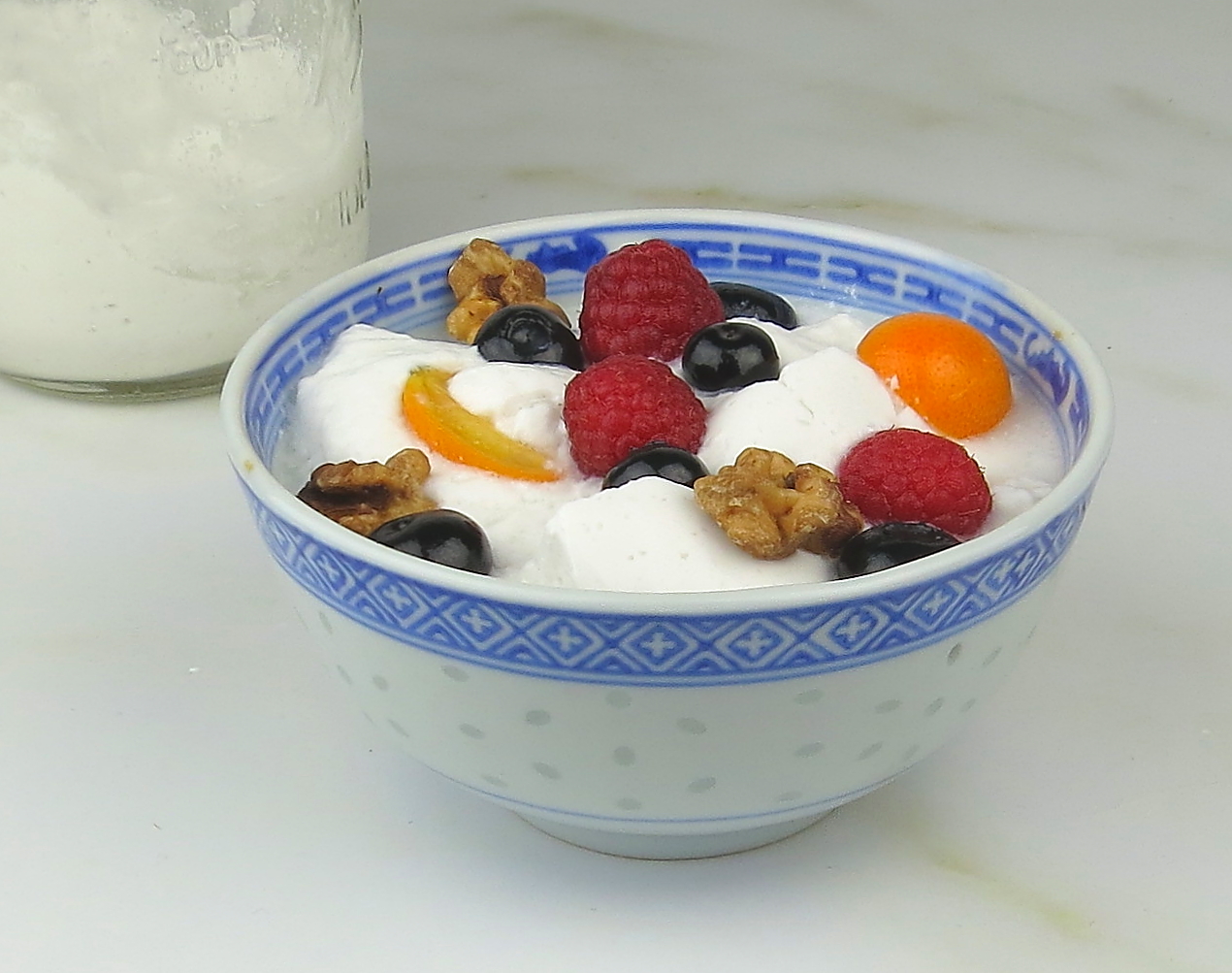
Source :- janeshealthykitchen . com
Breakfast
1 bowl cooked oats with 10 to 12 chopped almonds, ½ sliced bananas, a hand full of berries.
Breakfast Snack
1 apple and ½ cup of skim milk
Lunch
2 Ezekiel toasts or Gluten-free toasts and for toppings 1 small bowl full of mashed chickpea salad and 1 cup of yogurt
Lunch Snack
1 boiled egg. If you wish to, then you can drizzle the egg with ½ tbsp. olive oil, ¼ red peppers and a pinch of cumin seeds.
Dinner
½ cup of cooked brown rice with chili sweet potato and 2 tbsp. full of fat or Greek yogurt or ½ cup of coconut yogurt
Night Time Snacks:
4 square of dark chocolate
DAY 7
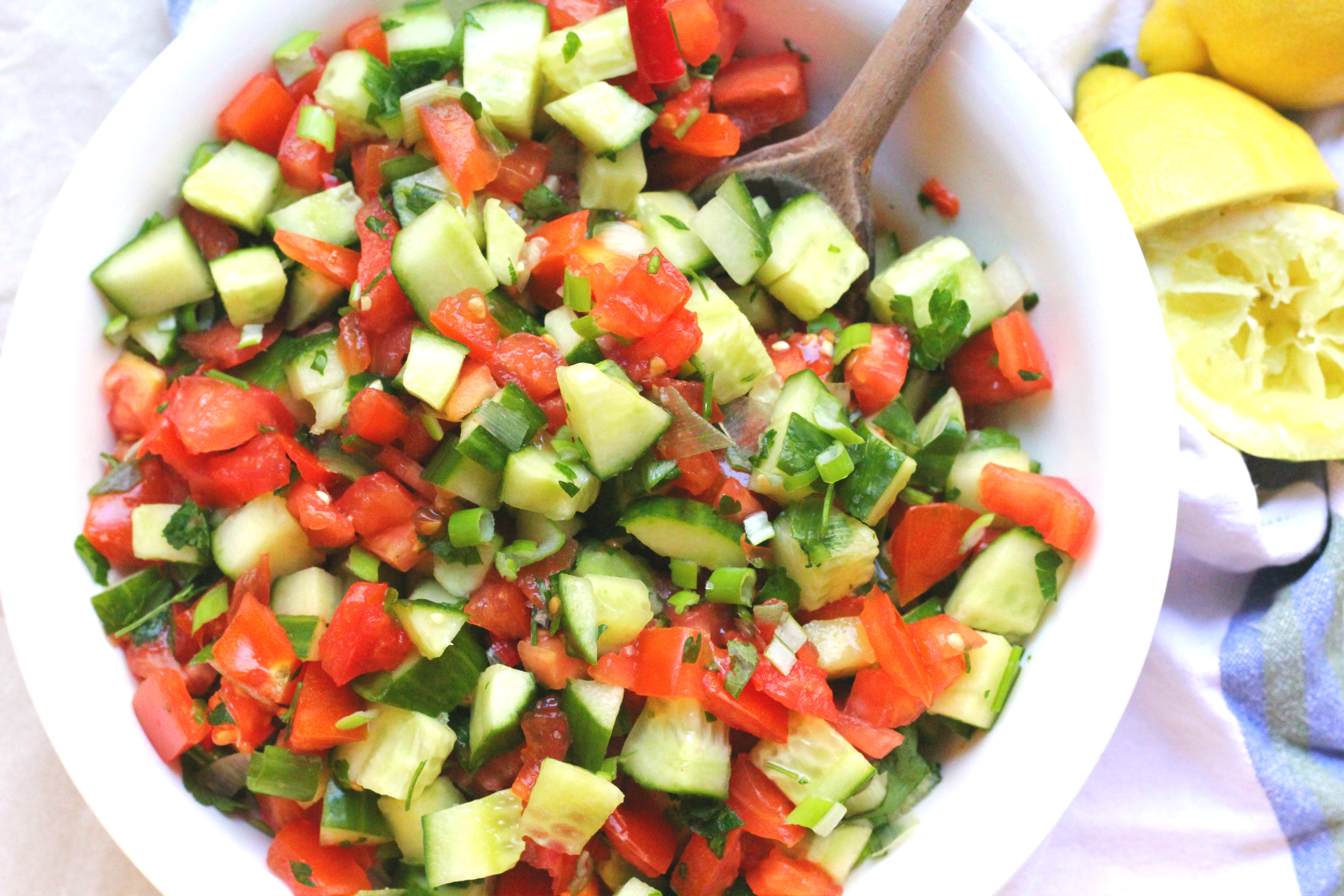
Source :- cearaskitchen . com
Breakfast
2 slices of whole grain homemade bread with freshly made almond butter ½ cup of berries, ½ cup of strawberry, and 1 cup of banana milkshake
Breakfast Snack
Finely sliced tomato, carrot and cucumber salad with a ½ cup of homemade spinach and some 2 tbsp. of artichoke hummus
Lunch
Finely chopped green salad + 2 cups full of homemade spinach + ¼ cup of chickpeas, 2 Tbsp. full of salad dressing (balsamic vinegar or lemon or olive oil) and ¼ avocado
1.5-ounce goat cheese + ¼ sliced cucumber + ½ chopped red pepper + 1 Tbsp. full of hemp seeds
Lunch Snack
1 apple with almond butter
Dinner
5 ounce of grilled salmon fish alongside 1 Tbsp. of tamari + ½ cup of microwaved quinoa and veggie mix or sautéed asparagus
Night Time Snack:
1 cup of skim milk
Try this high fiber diet plan for 4 weeks to lose weight quickly yet healthily.
High Fiber Foods:
Fiber also works in digesting the food consumed by us. Constipation, piles, high cholesterol, BP, diabetes, and other stomach problems start taking birth if you do not take the amount of fiber in your diet. Women need 25 grams of fiber per day, while men need 35 to 40 grams of fiber per day. But on average we are able to take only 15 grams of fiber a day. Therefore, if seen, every person needs to pay more attention to fiber by consuming high fiber foods. So, see below some high fiber foods.
Potato:
Potato is a widely and easily available vegetable that is rich in fiber. Potatoes are a top source of B vitamins, vitamin C, and magnesium. Varieties such as russet, red and sweet potatoes all contain at least 3 grams of fiber in a medium-sized veggie. This is only possible if you eat the potato with the skin on. Try adding cooked vegetables to salads, stews, soups, side dishes, stir-fries, and casseroles along with the surface, or enjoy baked potatoes more often.
Dark Chocolate:
Who doesn’t love chocolate! Dark chocolate is one of the most delicious and loved food items by people of all ages. It is also nutritious and rich in antioxidants. It has a secret ingredient: fiber! Precision dark chocolate made from 70-85% cacao contains 11 grams of fiber.
Quinoa:
Quinoa has been called the ‘mother of the grain’ from the ancient grain. It is a pseudo-cereal that is incredibly popular among health conscious people. It is full of nutrients including protein, iron, zinc, magnesium, potassium, and antioxidants, to name a few. Quinoa is rapidly replacing rice and wheat. Diabetic patients benefit greatly from quinoa as it ranks low on the glycemic index. Thirty-six percent of this dietary fiber is soluble, and 64 percent is insoluble.
Coconut:
Coconut provides 16% of the daily required dietary fiber with other fiber sources such as wheat bran, oat bran, and rice bran. Coconut is an excellent fruit because it contains a rich source of fiber and fat and is made from meat and liquid coconut water. The fiber in coconut plays an important role in helping digestion, preventing constipation by adding bulk to the stool. It also promotes healthy cholesterol levels and has been linked to a lower risk of heart disease. Coconut is one of the best fiber-rich foods and is available throughout the year.
Carrot:
Carrot is a root vegetable that is available in vibrant orange and sometimes pink colors. They are crunchy, flavorful, and are enjoyed both raw and cooked. It is rich in vitamin K, vitamin B6, magnesium, and beta-carotene, an antioxidant that converts vitamin A into carrots, improving eye health.
Brown Rice:
If you want to keep your body in tip-top shape, try serving brown rice in your meals once or twice a week and keep your body functions healthy. Insoluble fiber relieves digestive problems and keeps your stool regular. Equal amounts of soluble and insoluble fiber are essential for the healthy functioning of your body.
Oatmeal:
Oatmeal is high in soluble fiber. Eating a bowl of oatmeal for breakfast is the best way to start your day. It is one of the best ways to prevent the cholesterol in the body. It is one of the best and luxurious fibrous foods. Beta-glucan, the soluble fiber in oats, has many benefits that help lower cholesterol and blood sugar levels. It promotes healthy gut bacteria, and you feel full.
Sweet Corn:
Sweet corn is rich in insoluble fiber, which is good for gut health. It feeds on the good bacteria present in our gut. Sweet corn tops the fiber-rich food list because it provides additional nutritional value along with a lot of fiber. The amount of fiber present in sweet corn depends on the quality of the produce.
Mushrooms:
The amount of fiber in mushrooms varies with its type. A white raw truffle contains 0.8 grams of dietary fiber. But once cooked, the water content in mushrooms decreases, and the fiber per cup increases greatly because they are more concentrated. To up the fiber content, we can combine them with other fiber-rich vegetables.
Leafy Green Vegetables:
The green color is called the color of the fiber. Green, leafy vegetables are quite rich in vitamins, minerals, and beta-carotene. But their fiber content isn’t too bad. Among fibrous vegetables, leafy greens take first. About 1 gram of fiber is present in 100 grams of leafy greens, which makes it an excellent source of nutrients. You can add them to salads, saute them in olive oil, add garlic, lemon and herbs to bring out a rich flavor. Spinach leaves and beet greens contain calcium, iron, vitamin C, vitamin A as well as many other minerals.
Berries:
Jamun is widely known for its fiber-rich content. But it also provides the body with essential vitamins and antioxidants for added benefits. A fresh cup of blueberries contains 4 grams of fiber. Naturally low in calories, blackberries, strawberries, and raspberries are excellent sources of fiber. Jamun has the best fiber-per-calorie bargain. The tiny seeds in berries make the fiber content higher than in other fruits. You can add berries as a topping to breakfast cereals, salads, desserts, and yogurt.
Avocado:
Avocado is known to have high levels of heart-healthy monosaturated fat. It is a great source of fiber. An avocado contains about 9 grams of fiber, making it an ideal choice for people who are looking for fiber instead of a carbohydrate-restricted diet. Avocados also contain healthy fats which are good for a healthy heart.
Beans:
Most fiber is found in beans. Nutritious beans are rich in protein and soluble fiber and very low in fat. It is free from saturated fat and is a good source of many nutrients essential for human health. More than 15 grams of fiber is present in one cup of kidney beans and cowpeas.
Nuts:
Dietary fiber is one of the most important foods in a healthy diet. A diet rich in high fiber balances the body weight and also keeps it away from diseases. Almonds, pistachios and walnuts not only contain protein, they are also rich in fiber. Raisins contain both soluble and non-soluble fiber. The body gets instant energy from raisins.
Chia Seeds And Flax Seeds:
This helps in maintaining overall health benefits. They are rich in high-quality fiber. They are rich in protein, fiber, and omega-3 fats, which are helpful in boosting our metabolic system, quenching hunger, and increasing the big fat-burning hormone glucagon. One tablespoon of chia seeds contains about 5.5 grams of fiber.
Flaxseeds are also versatile seeds rich in omega-3s and fiber. Your body also gets all kinds of nutrients from flaxseed seeds. In addition to about 4 grams of fiber in 2 teaspoons of flaxseeds, there is also a special antioxidant rich in anti-estrogenic properties.
Broccoli:
Broccoli is a high-fiber perennial superfood. One cup of broccoli has about 5 grams of fiber and only 50 calories. This dark green vegetable, belonging to the Brassica family, is rich in iron, protein, calcium, carbohydrates, chromium, vitamins A and C, which makes the vegetable nutritious. Apart from this, it also contains phytochemicals and antioxidants, which are helpful in fighting disease and body infection and improves the digestive system.
Apple:
Apples are recommended to be eaten daily as they are rich in fiber. A medium-sized apple contains about 5 grams of fiber. Which comes from a special type of fiber called pectin. Pectin is a soluble fiber that forms in the stomach in the form of a gel, which helps the food to be easily digested and absorbed.
Brussels Sprouts:
Everyone loves Brussels Sprouts. Children especially like it very much. Like vegetables like Brussels sprouts, cabbage, broccoli are rich in fiber. It promotes stomach, kidney, and liver health benefits by maintaining proper bowel movements. It works to remove toxins from the body on a regular basis.
Bananas:
Compared to a ripe banana, a raw and green banana has a much higher amount of resistant starch, which is a type of indigestible carbohydrate that acts like a fiber in a way that improves the digestive system. You get 2.6% fiber from bananas.
Pear:
If we talk about fruits, then pears have the most fiber. But it is the fruit that is obtained according to the season. You can consume it only a few times a year. You get 3.1 grams of fiber in 100 grams of pears.
Wheat:
Wheat is used as a staple food in North India. Wheat is rich in fiber content. You can easily take wheat through roti or porridge. While making wheat roti, do not sieve the flour through a sieve because the highest amount of fiber is in the upper part of the wheat, which usually remains in the sieve while sifting the flour. This is the reason that the people of North India are not able to meet the amount of fiber even after making full use of wheat.